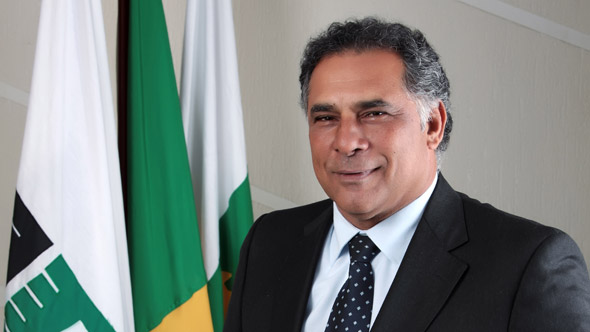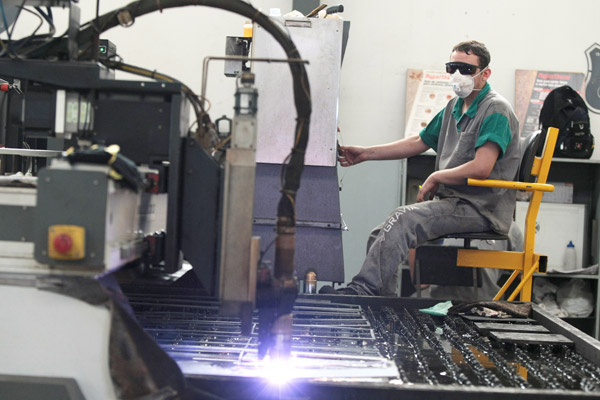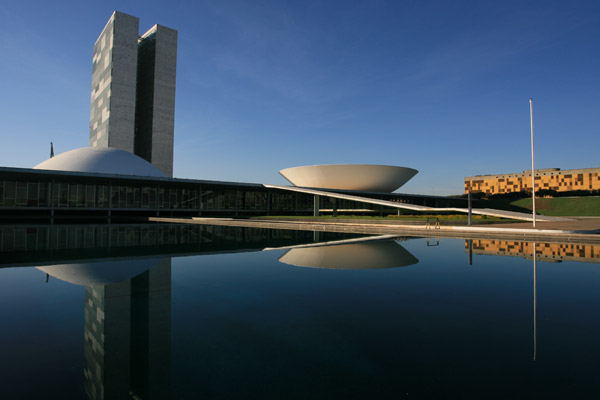Sistema Fibra: Industry in the Federal District
The President of the Federation of Industries of the Federal District, Antonio Rocha da Silva, talks about the role of Sistema Fibra in Brasilia’s industry. He also talks about the competitivness of the sector in the Federal District and mentions some of the challenges and investment opportunities in the State.

In the long term, competitiveness of the Brazilian industry is being affected by the strength of the Brazilian Real. There are also cheap imports coming from China. Thus, which are the incentives to improve the competitiveness of the industry in the Federal District?
The Industry Development Program created by Fibra in 2004, forecasted the industrial growth for Brasília. At that time, we were at 7,2% of the GDP. Nowadays, the GDP of the Federal District equals 10,2%. With the development of the new industries, including pharmaceutical or chemical, we think it will be possible to reach an estimated 15% by 2015.
Industry in Brasília has shown to be very competitive because we have been able to maintain our exports growth, mainly in the food sector.
Business opportunities in Brasília are diverse because Brasília has a profile directed to high technology companies. We have a project called “Cidade Digital” (Digital City). It’s a physical space into which Brasília wants to attract several investments in the IT sector and that will strengthen the productivity chain of several activities here in the Federal District.
In Brasília, we have the highest GDP, we have all representation of every institution in Brazil, we have the highest HDI index (Human Development Index), and we have also several technical schools and universities present in Brasília.
Are there any special incentives to draw investments into industry and to compete abroad?
We have a development program called “Pró-DF”, known in the capital as an incentive to buy land in the region of the Federal District. Since the land is public, buyers can get up to an 80% discount. It’s an extremely competitive program which also brings fiscal incentives.
As far as resources are concerned, we have the FCO – Fundo Constitucional de Financiamento do Centro-Oeste (Constitutional Fund for the Financing of the Midwest), which has the lowest interest rates in Brazil. We also have financing from the BNDES – Banco Nacional do Desenvolvimento (Brazilian Development Bank), which is an important alternative to investors that want to bring their projects into the Federal District.
The main challenge for investors in Brazil is the complicated tax system. Can you comment on that?
Bureaucracy in Brazil is a complicated obstacle; the question of the high taxes is also an obstacle to investments. Legal matters are also barriers.

The Brazilian tax burden is very high, but all obstacles are being discussed in order for us to overcome them, be more competitive, and ensure more security to external investment.
What is the outlook for the evolution of the industry in terms of exports and growth in different sectors in the Federal District?
We made a study called “Programa de Desenvolvimento Industrial” (Industry Development Program) in 2004, where we forecasted the industrial growth for Brasília. We thought it was possible to reach a growth around 15% of the GDP. At that time, we were at 7,2% of the GDP. Nowadays, the GDP of the Federal District equals 10,2%. With the development of the new industries in the Federal District, including pharmaceutical or chemical, we think it will be possible to reach the estimated 15% by 2015.
Many countries in the world are trying to attract IT industries. Why should investors settle down in Brasília?
Brasília’s market is very attractive. Let’s not forget it has the highest GDP rate out of all Brazilian States. Also, the entire structure of the Federal Government is here in the Federal District.
Is “Cidade Digital” (Digital City) open to everyone?
There is a public tender to get one or more private investors, so that Terracap can build the “Cidade Digital” infrastructure.
What has been the evolution of memberships in Fibra and which are the plans for 2012 and 2013 to increase competitiveness, cut the red tape, etc.?
We have a very good dialogue with the local government. Ten years ago, we also elaborated an excellent canal, together with the Parliament, to focus on the protection of the industry’s interests, through an evaluation of every project. We’re permanently monitoring these actions.
In what concerns the Government, we’ve been able to establish several partnerships in order to bring more competitiveness to the Federal District industries, with the local tax burden reduction, incentives, and legal security for the companies.
Which are the plans in terms of education and training? Can industry help reducing disparity between cities in the country?
Industry is certainly an opportunity to create jobs. In terms of professional training, we have an institution called SENAI where we prepare young people to work in the industry. In 2011, SENAI trained more than 12,000 students whose future career was in the industry sector.

Which are the big names of industrial companies that have established themselves in the Federal District? Can you give some examples?
We have a high volume of industries. We have great construction companies, big technological companies, printing companies, etc. There’s “Asa Alimentos”, a genuine Brazilian company, “União Química”, a big player in the pharmaceutical sector, Bimbo Brazil, Pioner, etc.
Do you have a message for investors who are considering Brasília as their next stop? How can Fibra help such investors?
Besides all the competitive advantages Brasília has, we’re going to host the Football World Cup which is an investment opportunity in terms of urban mobility, in the enlargement of the hotel network, in tourism, etc.
We will host the Confederations Cup and 7 of the World Cup games. I think those games constitutes a major opportunity for investors. We also lack rail tracks, roads, a subway system, etc. All these opportunities can be analysed and it can be a big market for investors.
In your opinion, which industrial sectors will decrease and which sectors have more future in the Federal District?
In Brasília, the construction and the IT sectors will always have the tendency to grow and they can be a good option.
Which would be your final message to our viewers and readers?
Brasília is very well-known as the administrative and political capital of Brazil. Yet it’s also a city that has many business opportunities and Fibra has all the information that investors require when considering investing in Brasília and the Federal District.